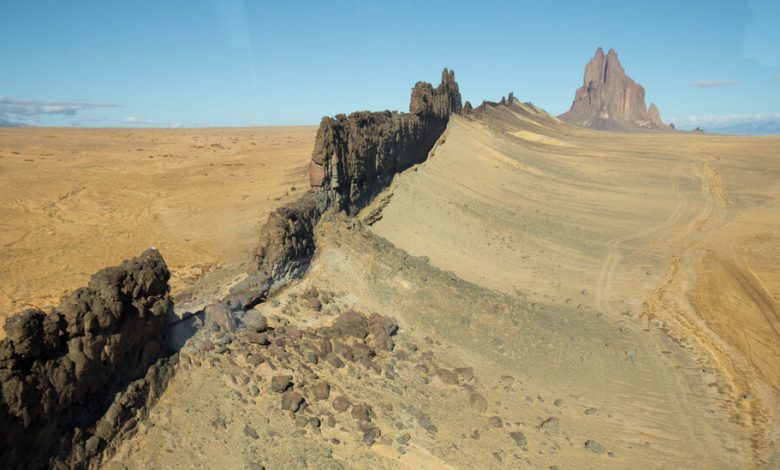Indian Country Needs Money to Protect Its Wildlife Heritage. Congress Must Help.

Over the last few decades, there has been a steady stream of news about the crisis facing fish and wildlife across the world.
The journalScience in 2019 reported the loss of nearly three billion birds in North America since 1970, and more than 1,600 plant and animal species in the United States now require federal protection for survival. Worldwide, extinctions are accelerating. One comprehensive study warned that as many as one million species worldwide could vanish, many within decades.
For many tribal nations and Indigenous peoples, these losses are more than a statistic. They represent a fundamental threat to how Native peoples practice their religions and pass on their cultures, foods and traditions to the next generation. As sovereign entities responsible for managing tens of millions of acres, tribal nations don’t just manage wildlife and their habitats for biological and scientific purposes. We also manage them for our own well-being and livelihoods.
Native American tribes nonetheless have been systematically excluded from the major sources of federal conservation funding. Now, however, legislation that has passed the House and is currently in the Senate would make available $97.5 million a year to the country’s 574 recognized tribes, their first-ever dedicated federal funding for wildlife conservation.
This would be a welcome and an important change. State fish and wildlife agencies depend heavily on hunting and fishing gear taxes. But tribes were not included in the decades-old laws that makes this funding available and are not eligible to receive it, even though we pay these taxes like everyone else and tribal lands are included in the formula that calculates how much money a state receives from the federal government.
Another program, the State and Tribal Wildlife Grant Programs guarantee money to the states, but require tribes to compete against each other for grants capped at $200,000, an amount that stifles our ability to build the necessary staff and resources or take on long-term restoration projects. Over the first two decades of these programs, which began for states in 2000 and for tribes in 2001, states and territories received over $1 billion; tribes got around $94 million. And the Land and Water Conservation Fund, which supports conservation and recreation programs with revenues from federal oil and gas leases on the Outer Continental Shelf, treats tribes largely as subsidiaries of the states, not as the sovereign nations they are, by requiring tribes to apply to their states for grants.
The end result is that while tribal nations have deep cultural knowledge of how to manage wildlife on our lands, we do not have anywhere near the money we need to do so.
The 18-million-acre Navajo Nation, where I live, extends across three states in the Southwest and is the largest reservation in the United States. It is roughly the size of West Virginia. But in the 2019 fiscal year, according to my calculations, West Virginia received more than 10 times as much in funding from all sources for wildlife management, on a per-acre basis, as the Navajo Nation did — over $2 per acre, compared to just 20 cents.
What can you do to manage wildlife with just four nickels an acre? More than you might think. Even with such sparse funding, the Navajo Nation’s Department of Fish and Wildlife, which I lead, has had many successes. We’ve increased our desert bighorn sheep population more than tenfold over the last 20 years. Our efforts to recover razorback suckers in the San Juan River system is likely part of why the United States is now in the process of downgrading the fish to threatened from endangered status.
We monitor and protect rare, sensitive plant and animal populations through the Navajo Endangered Species List, and are assessing if we can successfully reintroduce the critically endangered black-footed ferret to our lands, where it has been missing since the 1940s.
The Navajo are deeply proud of what we have achieved, but we are by no means the only tribe doing innovative conservation work with scarce resources.
In Northern California, the Hoopa Valley Tribe’s wildlife division maintains one of the most comprehensive sets of data in the United States on fishers, a relative of mink, otter and badgers, and the tribe’s methodology is being replicated elsewhere. In New York, the Seneca Nation of Indians raise eastern hellbenders, the nation’s largest salamander, and release them in the Allegheny River. In South Dakota, the Lower Brule Sioux Tribe is one of several tribes in the nation that have reintroduced black-footed ferrets to their lands. These are just a few of many similar examples nationwide.
The legislation before the Senate, if passed, would mark the first time Congress has sought to leverage our thousands of years of knowledge and our vested interest in solving the biggest challenges facing our fish and wildlife.
The House passed the Recovering America’s Wildlife Act in June by a vote of 231 to 190, and it has 42 co-sponsors in the Senate, including 16 Republicans. In addition to providing dedicated financing for tribes, the bill would send $1.3 billion a year to states and territories to prevent extinctions and help healthy species thrive.
The bill has been stalled as lawmakers search for a way to pay for it. Reportedly, one of the latest ideas is raising the money by closing a tax loophole on cryptocurrency assets.
The sweep of Indian Country is enormous: Land under American Indian or Alaska Native control totals over 100 million acres. Passing the Recovering America’s Wildlife Act would be an important step in tackling the disparity resulting from more than a century of inequitable funding to Native communities for wildlife conservation and in charting a new course of engagement with Native peoples.
Because this bill was drafted with assistance from tribal fish and wildlife managers, it respects the nation-to-nation relationship between tribes and the federal government and will actually address the needs of Indian Country and its wildlife.
The crisis facing thousands of species of fish, wildlife and plants cannot be solved without investing in the work already underway on the Navajo Nation and on other tribal lands and waters. The Senate should seize the moment before it recesses for the holidays and pass what would be a historic win for Indigenous communities and for wildlife.
Gloria Tom is the director of the Navajo Nation’s Department of Fish and Wildlife and a board member of the National Wildlife Federation.
The Times is committed to publishing a diversity of letters to the editor. We’d like to hear what you think about this or any of our articles. Here are some tips. And here’s our email: [email protected].
Follow The New York Times Opinion section on Facebook, Twitter (@NYTopinion) and Instagram.





